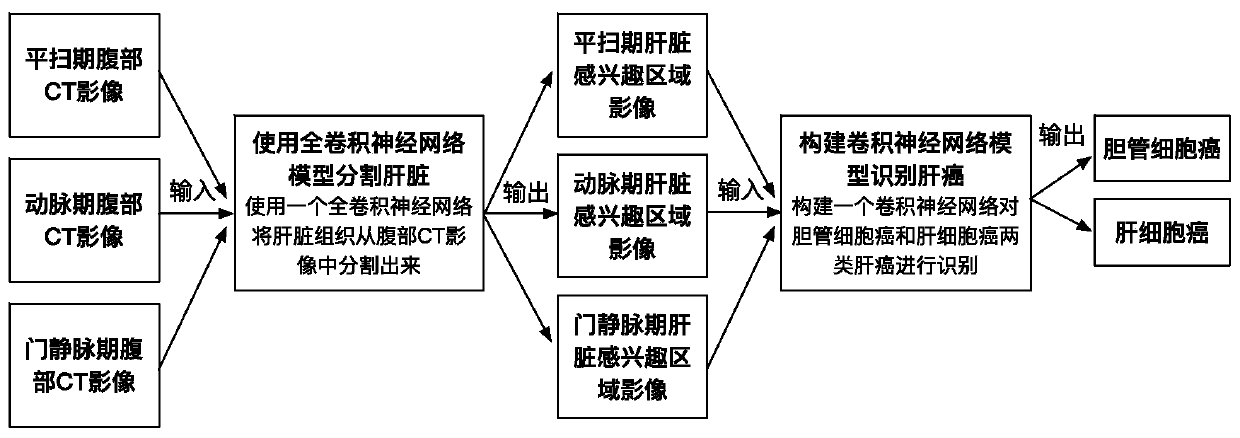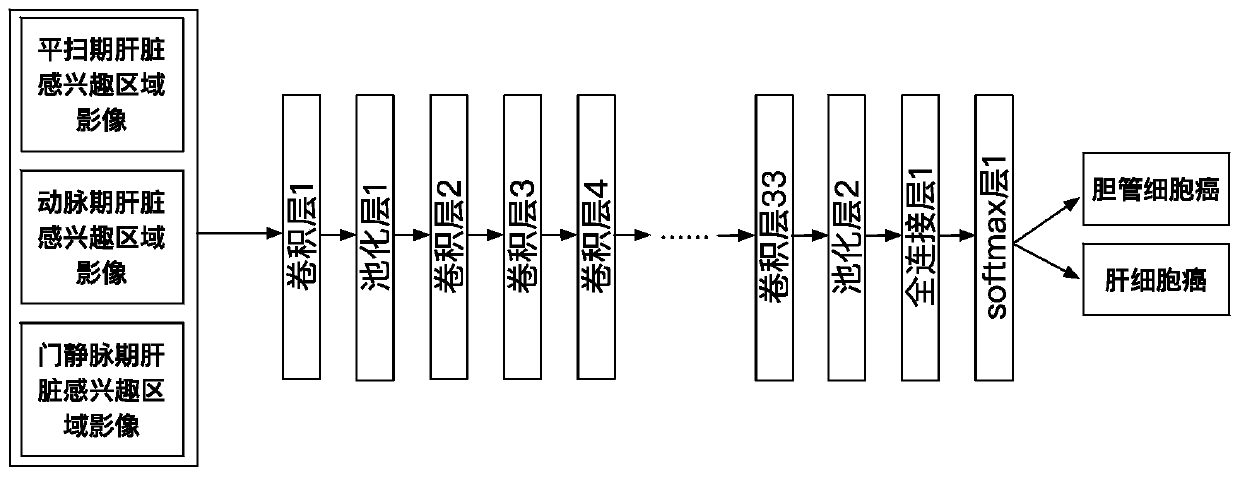Automatic liver tumor classification method and device based on multi-stage CT image analysis
A CT image and automatic classification technology, applied in image analysis, neural learning methods, image enhancement, etc., can solve the problems of improving recognition rate, unclear display of lesion sites, limited tumor characteristic information, etc., and achieve high precision results
- Summary
- Abstract
- Description
- Claims
- Application Information
AI Technical Summary
Problems solved by technology
Method used
Image
Examples
Embodiment Construction
[0021] Such as figure 1 As shown, this method for automatic classification of liver tumors based on multi-phase CT image analysis includes the following steps:
[0022] (1) Acquire contrast-enhanced abdominal CT scan images of patients with cholangiocarcinoma and hepatocellular carcinoma, save them as arterial phase, portal venous phase, and delayed phase, and diagnose the type of liver cancer to which all data belong, as The gold standard for model training;
[0023] (2) Construct a three-dimensional fully convolutional neural network segmentation model, use the image data of cholangiocarcinoma and hepatocellular carcinoma collected in step (1) as the input of the model for learning, and learn the intrinsic characteristics of liver tissue at each stage through the model Fully automatic training and learning, so as to segment it from abdominal CT images, as the region of interest of the subsequent liver cancer recognition model;
[0024] (3) Construct a three-dimensional con...
PUM
 Login to View More
Login to View More Abstract
Description
Claims
Application Information
 Login to View More
Login to View More - R&D
- Intellectual Property
- Life Sciences
- Materials
- Tech Scout
- Unparalleled Data Quality
- Higher Quality Content
- 60% Fewer Hallucinations
Browse by: Latest US Patents, China's latest patents, Technical Efficacy Thesaurus, Application Domain, Technology Topic, Popular Technical Reports.
© 2025 PatSnap. All rights reserved.Legal|Privacy policy|Modern Slavery Act Transparency Statement|Sitemap|About US| Contact US: help@patsnap.com


